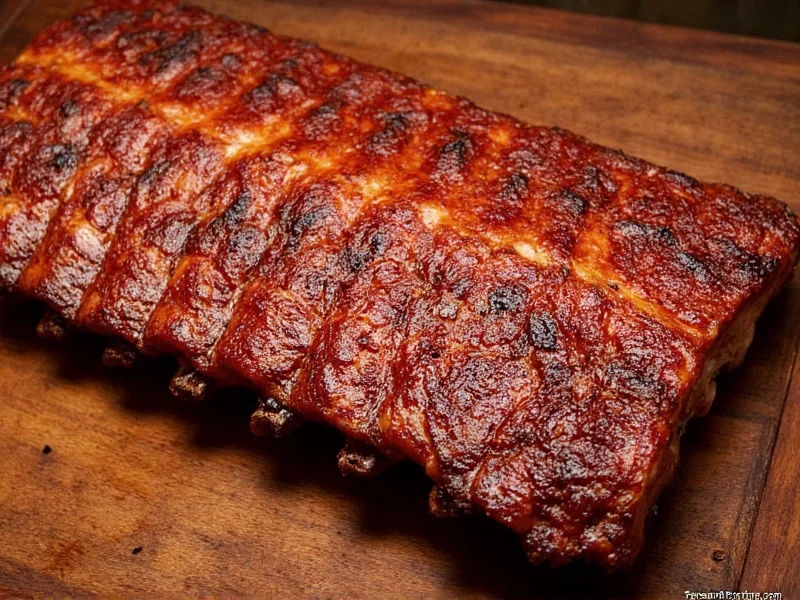Understanding rib portions is essential for meal planning, grocery shopping, and restaurant ordering. While 12-13 ribs represent the industry standard for a full rack, several factors can influence the exact count you'll encounter.
Standard Rib Counts by Cut Type
The number of ribs in a full rack remains relatively consistent across different rib varieties, though the size and meatiness of each rib varies significantly.
| Rib Type | Ribs Per Full Rack | Average Weight | Characteristics |
|---|---|---|---|
| Baby Back Ribs | 12-13 | 1.5-2.5 lbs | Curved, leaner, more tender |
| Spare Ribs | 11-13 | 3-4 lbs | Flatter, fattier, more bone |
| St. Louis Cut Spare Ribs | 12 | 2.5-3.5 lbs | Square-cut, trimmed spare ribs |
| Beef Back Ribs | 7-12 | 2-4 lbs | Larger bones, meat between bones |
Why Rib Counts Can Vary
Several factors contribute to slight variations in the number of ribs per rack:
- Animal size and breed - Larger hogs may yield racks with 13 ribs instead of 12
- Butchering techniques - Some butchers remove the sternum bone (the 13th rib) from spare ribs
- Regional standards - European butchers sometimes count ribs differently than American counterparts
- Retail processing - Grocery stores may split larger racks into "full" and "supplemental" portions
Understanding Restaurant Portions
When dining out, be aware that restaurant "full racks" often contain fewer ribs than grocery store racks. Many establishments serve 8-10 ribs as a "full rack" to control portion costs. Always ask about portion size before ordering if you're expecting the standard 12-13 ribs.
The difference between a full rack and half rack matters significantly for meal planning. A true half rack should contain 6-7 ribs, providing enough for one generous serving. Some restaurants, however, may serve as few as 4 ribs as a "half rack," which represents less than half of a standard rack.
Shopping Tips for Buying Ribs
When purchasing ribs, use these guidelines to ensure you're getting a proper full rack:
- Count the bones before purchasing if they're visible through packaging
- Look for consistent thickness across the rack (indicates proper butchering)
- Ask the butcher specifically for a 12-13 rib rack
- Verify weight expectations (baby backs should be 1.5-2.5 lbs, spares 3-4 lbs)
- Examine the meat-to-bone ratio for quality assessment
Cooking Considerations for Full Racks
Knowing the exact rib count helps with cooking preparation. A standard full rack of baby backs typically serves 2-3 people, while spare ribs serve 3-4 due to their larger size. When planning cooking time, remember that racks with 13 ribs may require 10-15 minutes longer than those with 12 ribs to reach optimal tenderness.
For competition-style barbecue, pitmasters often remove the tapered end rib (sometimes called the "cheater rib") from baby backs, resulting in a 12-rib rack even when starting with 13. This creates a more uniform appearance for presentation.
International Variations in Rib Counting
Outside North America, rib counting standards differ. In some European countries, butchers may include the rib connected to the spine, resulting in counts of 14-15 ribs per rack. Australian butchers sometimes separate ribs differently, with "racks" containing as few as 8-10 substantial ribs.
When following international recipes that specify "one rack," check whether the recipe developer uses standard North American measurements or local counting methods to avoid portioning errors.











 浙公网安备
33010002000092号
浙公网安备
33010002000092号 浙B2-20120091-4
浙B2-20120091-4